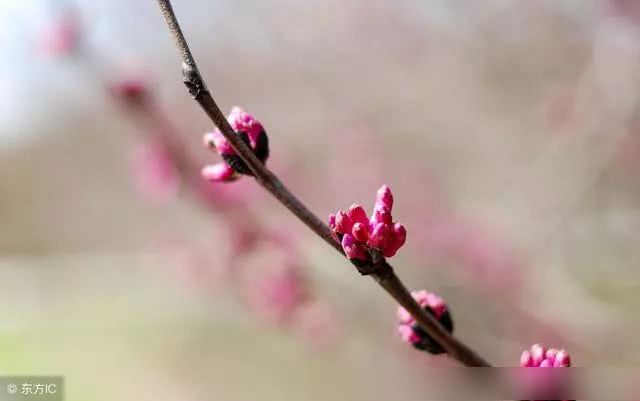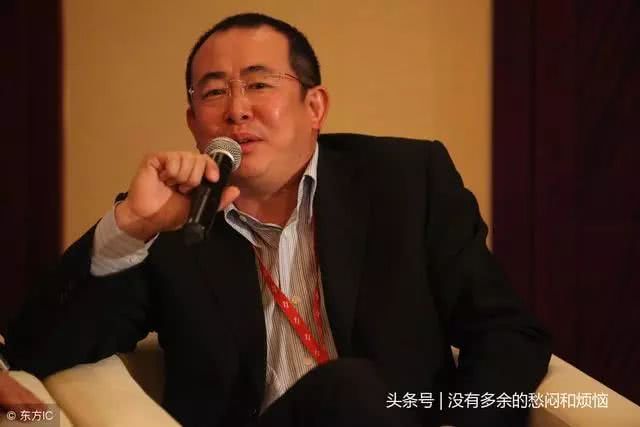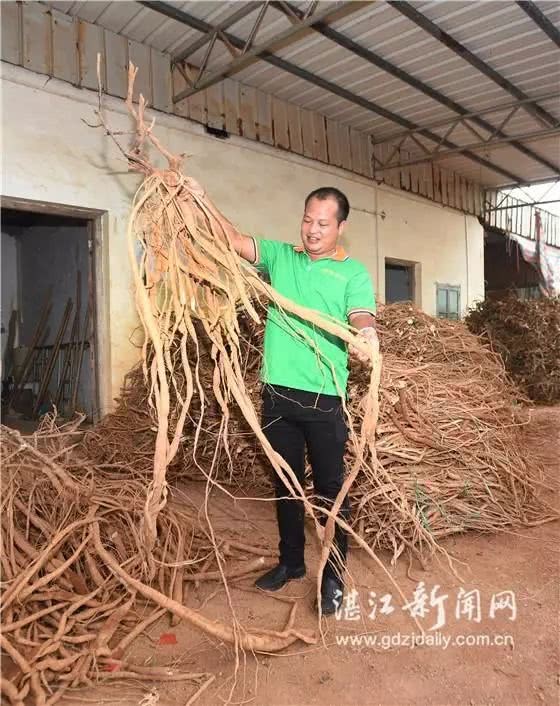The quality of flower bud differentiation of fruit trees is good and the orchard will have a bumper harvest next year.

The number of flower bud differentiation, plumpness and flower quality directly determine the yield of the orchard in the second year, and more directly related to the orchard planting income of the majority of orchards. If we want to have good flower bud differentiation and high flower quality, we must fully understand which factors will affect flower bud differentiation, and then improve the management level pertinently in order to achieve a bumper harvest in the orchard next year!
The main factors that determine the number of flower bud differentiation and plumpness, from the external factors, the main factors affecting flower bud differentiation are light, temperature, humidity, nutrition, from the internal factors, the main factors affecting flower bud differentiation are bud position, branch and leaf growth, root status, fruit weight, balance of various hormones in the tree and so on.
Here are the seven main factors affecting flower bud differentiation of fruit trees and seven orchard management methods to improve the quantity and quality of flower bud differentiation. For your reference.
First, good lighting
As the saying goes, "there is no result without light". Light is the basis of photosynthesis and nutrient production of fruit trees. sufficient light can enhance photosynthesis of fruit trees, produce more nutrients, and provide substantial nutritional guarantee for flower bud differentiation. for example, the formation and accumulation of organic matter and the balance of endogenous hormones are directly related to light.
In the period of flower bud differentiation, if the weather is always sunny, the permeability in the garden is good, and the light conditions are sufficient, fruit trees will accumulate more nutrients and promote better and fuller differentiation of flower buds. If the weather continues to be cloudy and rainy during the flower bud differentiation period, or if the garden is cloudy and impenetrable, on the one hand, it will stimulate the new ones to continue to grow and consume a lot of nutrients, on the other hand, the flower buds will not be able to complete morphological differentiation very well. it is easy to appear the flower buds that seemed to be very full at that time, and in the second year, they became false flowers that could not continue to develop and bear fruit.
In the management of fruit trees, there is an empirical saying that "if it is sunny in July and August, the flower buds will be strong in the coming year." it refers to the close relationship between light and flower bud differentiation.
At this point, fruit growers should pay attention to the combination of various pruning methods of fruit trees (the most direct and effective way to improve the lighting environment of fruit trees during scientific pruning), to actively eliminate the canopy and shade of fruit trees in the orchard, and to maximize the ventilation and light transmission conditions of fruit trees in the garden, and at least keep the light intensity of fruit trees in the garden more than 30%.
2. Suitable temperature
Temperature not only directly affects the quality of photosynthesis, root absorption and transpiration of fruit trees, but also has a great relationship with the hormone level in the tree, and more directly determines the number of flower buds and the quality of flower formation.
Generally speaking, the environment of 20-30 degrees is most conducive to the differentiation and formation of flower buds in fruit trees, and too high or too low temperatures will affect the quality of flower bud differentiation. For example, a high temperature of more than 35 degrees or a low temperature of less than 15 degrees will cause difficulty in flower bud differentiation, flower formation and low quality (high temperature will inhibit flower bud differentiation, low temperature will frostbite flower buds), especially to prevent frost injury. Otherwise, it is easy to cause the flower buds to be frozen or frozen to death, resulting in a big reduction in the yield of the whole garden in the following year. At this point, I believe the majority of fruit farmers have a deep experience of the serious late spring cold this spring.
The temperature environment needed for flower bud differentiation of several common fruit trees: banana 25-30 degrees, grapes, pineapple 20-30 degrees, persimmon 20-25 degrees, Hawthorn 15-25 degrees, apples 18-28 degrees, citrus 10-20 degrees.
Third, rational water control
During the period of flower bud differentiation, it is very sensitive to water. During this period, water should be properly controlled to keep the soil properly dry, but excessive drought will also inhibit flower formation, but excessive soil moisture in the garden will not only cause new growth and growth to consume a lot of tree nutrients, but also lead to new and slightly immature, if excessive drought will lead to excessive water consumption of fruit trees, which will lead to undifferentiation or poor differentiation of flower buds.
Flower bud differentiation is a process of transformation from vegetative growth to reproductive growth. Scientific and reasonable water control can inhibit leaf growth, promote new and old maturity, and enhance photosynthesis to produce more nutrients. More nutrients accumulated by trees are transferred to flower buds to promote better differentiation and flower formation of fruit trees.
For apple, peach, plum, pear and other fruit trees whose flower buds differentiate from May to October, fertilizer can be applied with water twice continuously after fruit picking, once every other week. Then moderate water control is carried out for about 20-30 days (the initial fruiting trees and a small number of fruit-hanging trees can appropriately prolong the water control time) until the leaves of the fruit trees are slightly rolled or the topsoil in the garden is slightly cracked or the leaves turn pale.
For orchards that are prone to stagnant water or heavy soil stickiness, the soil around the roots of shallow soil can be removed at the initial stage of flower bud differentiation, and the roots can be cut or dried for 20-30 days. In the evening, attention should be paid to covering soil and grass to keep warm, which can also promote flower bud differentiation.
4. Adequate nutrients
The quality of flower bud differentiation is closely related to phosphorus and potassium and trace elements such as calcium, boron, zinc, copper, boron, molybdenum and cobalt, especially sufficient calcium and boron fertilizer, which has a very good promoting effect on flower bud differentiation and improving flower bud quality.
On the one hand, after fruit harvest is finished, reasonable and sufficient base fertilizer should be applied in time to replenish nutrients for the deficient trees and promote tree potential to rejuvenate as soon as possible, so that fruit trees can produce and accumulate more nutrients. On the other hand, attention should be paid to extra-root topdressing of trace fertilizers such as calcium and boron during flower bud differentiation. 0.3% potassium dihydrogen phosphate solution or 0.3% calcium superphosphate solution + 0.3% urea solution can be sprayed 2-3 times. Spray once every 7-10 days (you can also apply fertilizer) to provide nutritional guarantee for fruit trees to form full flower buds.
For young trees and old and weak trees, fruit should be picked in advance or in batches, which can reduce the nutritional pressure of trees, promote the restoration of fruit trees as soon as possible, and make flower buds differentiate more and better.
V. Scientific pruning
For fruit trees, during the period of flower bud differentiation, the more vigorous the branches are, the worse the quality of flower bud differentiation is, and the lower the rate of flowering and fruit setting in the next year is.
Therefore, on the one hand, during summer pruning, the overgrown buds in the crown and the competitive buds under the cut can be removed by wiping buds, and at the same time, the coring should be carried out when the new length is about 40 cm, and the vigorous upright branches can also be pulled and twisted. On the other hand, in the period of prosperous autumn shoots, the dense weak branches, old and weak fruit branches, strong and prosperous long branches, umbrella branches and cap branches of fruit trees should be removed or pruned in time, so as to promote better flower bud differentiation.
VI. Rational harvest
On this point, fruit can be harvested flexibly according to the period of fruit trees, strong trees and high-yield trees can be harvested by stages, and weak trees and young fruit trees can be harvested in advance, which can better reduce the burden of tree nutrition, better promote fruit trees to restore tree potential as soon as possible, accumulate more nutrients, and play a very good role in promoting flower bud differentiation.
Balance hormone
In addition, we also need to understand that flower bud differentiation is the result of the interaction of a variety of endogenous hormones, in which ethylene, abscisic acid and cytokinins can promote the formation of flower bud differentiation. Auxin and gibberellin have inhibitory effect on flower bud differentiation. You can spray fruit trees with paclobutrazol 1-2 times before the new growth stops, which can well promote the differentiation of terminal buds into flower buds. For young trees that have not yet borne fruit, ethephon can be sprayed in autumn, which can not only control the prosperous growth, but also make the young trees have multiple medium and short branches, and can also promote the formation of flower buds.
In addition, the position of flower buds also affects the ability and quality of flower bud formation, which should also be paid attention to by the majority of fruit growers.
This article comes from the network, if there is any infringement, please contact to delete.
- Prev

In 2019, the state will focus on rectifying these major industries, three categories of people will lose their jobs and prepare early
In recent years, the state has stepped up environmental protection efforts. According to the current policy analysis, law enforcement will be further strengthened in 2019. These three types of enterprises in rural areas will be completely shut down. Farmers engaged in these three types of industries may have to face...
- Next

What's the magic of Niu Li? Planting this kind of medicinal material can get 200000 yuan per mu.
Weng Yijie, a young man in Huazhou, Guangdong Province, has grown cattle to become a "cow" 2018-10-08. Source: Zhanjiang Daily, in recent days, in Wuchuan City, Guangdong Province, Huancheng Agricultural Development Co., Ltd. is located in Wangcun Gang Town Bashi Village Niuda.
Related
- Wuhan Hospital Iron Tree Blooming Result Was Instantly Frightened by the Gardener Master
- Which variety of camellia is the most fragrant and best? Which one do you like best?
- What is the small blue coat, the breeding methods and matters needing attention of the succulent plant
- Dormancy time and maintenance management of succulent plants during dormancy
- Minas succulent how to raise, Minas succulent plant pictures
- What are the varieties of winter succulent plants
- How to raise succulent plants in twelve rolls? let's take a look at some experience of breeding twelve rolls.
- Attention should be paid to water control for succulent plants during dormant period (winter and summer)
- Watering experience of twelve rolls of succulent plants
- Techniques for fertilizing succulent plants. An article will let you know how to fertilize succulent plants.

